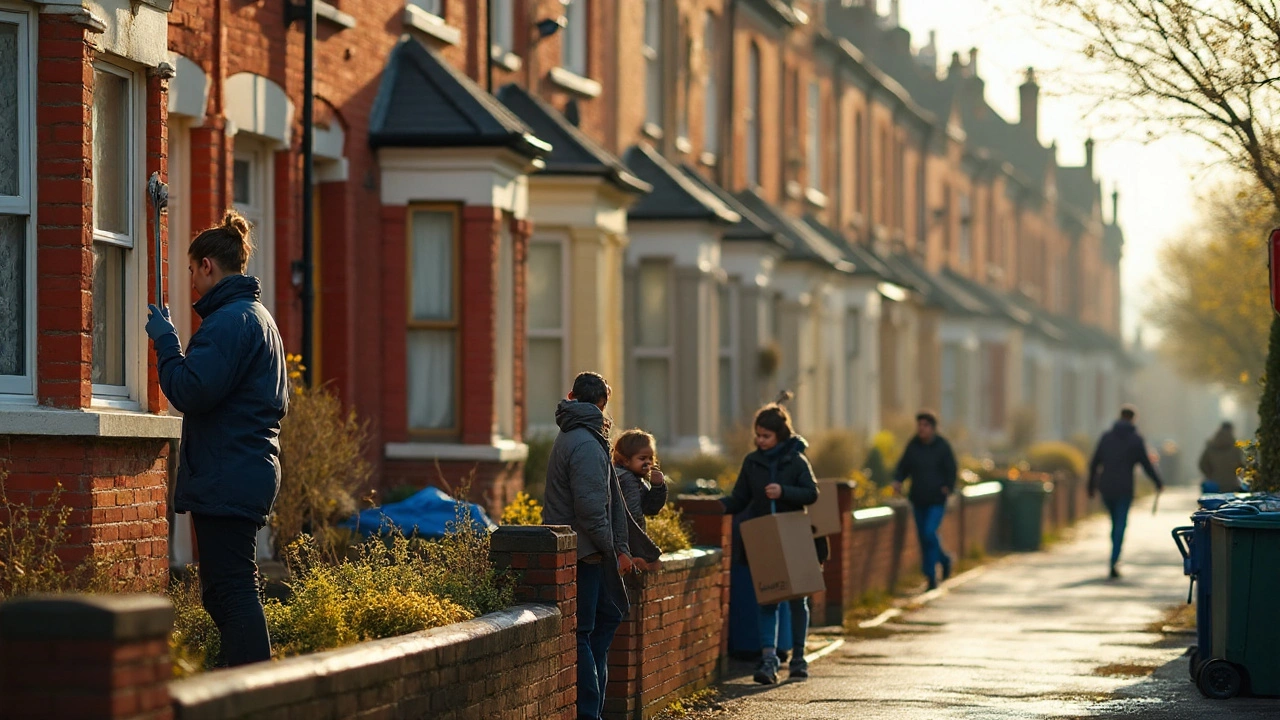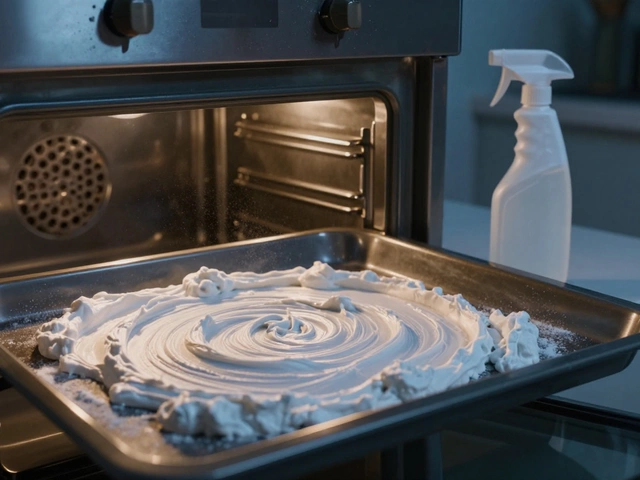You can tell when spring’s close because the internet starts buzzing about cupboards, vacuums, and donation runs. The twist? Spring doesn’t hit at the same time everywhere, yet the ritual keeps coming back. So how popular is it-really? We’ll use hard signals: search data, household surveys, retail and service spikes, and what charities see at their loading docks.
Spring cleaning is a seasonal deep-clean and declutter tradition where households tackle infrequent jobs (windows, wardrobes, appliances) and reset routines.
TL;DR
- Search interest for spring cleaning surges twice a year: March-April in the Northern Hemisphere and September-October in the Southern Hemisphere.
- Annual surveys show most households still plan a spring clean, though tasks are spreading across the year.
- Retailers report seasonal lifts in cleaning tools, storage, and organizers; charities see donation spikes at the same time.
- Short lets, home moves, and minimalism trends keep demand high beyond “just spring.”
- Expect regional timing differences: Australia and New Zealand peak in early spring (Sep), the US and UK in early spring (Mar).
What “popularity” means here
Popularity isn’t one number. We’ll look at five signals that move together:
- Search interest (how often people ask about it)
- Household surveys (who actually plans to do it)
- Retail and service demand (what people buy and book)
- Donation and waste volumes (where the clutter goes)
- Related cultural events (minimalism, Earth Day, and move-out cycles)
Search data: the most visible heartbeat
Google Trends provides a relative search interest index (0-100) showing when topics spike and fade by region and time.
Pop open Google Trends and type “spring cleaning.” You’ll see a neat rhythm: in the US and UK, the curve climbs in late February, crests around March-April, then falls. In Australia, it rises in late August, peaks through September, and eases by mid-October. That split tells us the phrase is alive in both hemispheres, just offset by seasons. The curve rarely goes flat; it’s seasonal, not niche.
Two more tells:
- Related queries shift by month-“checklist,” “declutter,” “donation pick up,” and “organizing bins” cluster at the top of peaks.
- Breakout topics line up with trends-“mattress cleaning,” “grout,” “mould removal,” “wardrobe purge,” and “pantry organization.”
Household surveys: people still plan a spring clean
American Cleaning Institute is a US trade group that runs annual national surveys on cleaning attitudes and behaviors. Their recent waves consistently show most US households intend to do a spring clean each year, even if they stretch heavy tasks across multiple weekends. The typical plan looks like this: windows and blinds, kitchens (fridge, oven), bathrooms (tile, grout), wardrobes, and outdoor areas as temperatures improve.
Office for National Statistics time-use data in the UK and the OECD’s time-use database keep showing that unpaid household work is steady across the year, but the “big jobs” concentrate when daylight and weather cooperate-peak spring and, in some households, early autumn. That balances the survey story: people still aim for a seasonal reset, but maintenance is becoming more year-round.
Retail and services: where wallets prove interest
IBISWorld is a market research publisher that tracks industry revenue, seasonality, and demand drivers across cleaning and home services. Reports on domestic cleaning services often show seasonal bumps when households schedule deep cleans after winter or before renting out rooms. On the retail side, category-level lifts tend to appear in:
- Floorcare and small appliances (vacuums, steam mops)
- Storage and organization (bins, shelving, labels)
- Consumables (microfiber, sprays, descalers)
- Outdoor gear (pressure washers as weather turns)
Even if exact lift percentages vary by country and retailer, the pattern is stable: new storage plus a better vacuum is the classic “I’m serious this year” combo. Services tell a similar story: domestic cleaners book out earlier across spring peaks, while end-of-lease crews get busy in tandem with moving cycles.
Donations and waste: the exit door for clutter
The Salvation Army is a charitable organization that accepts household donations and reports seasonal volume changes. Across Australia, the UK, and the US, donation centers commonly see spikes in spring and early autumn as closets get purged. In North America, Goodwill is a large US nonprofit retailer receiving household donations; it often notes surges around seasonal cleanouts and moving periods. Council hard-waste collections and tip (landfill) traffic also rise when the weather warms, which supports the same idea: spring cleaning shows up in what leaves the house.
Regional timing: why your spring isn’t my spring
Australian Bureau of Statistics is a national statistical agency; its household and environment datasets help track consumption, time use, and waste trends. In Australia, spring runs September-November. Search interest and donation activity peak in September-October, which matches school holidays and milder weather. In the US and UK, late March-April is the sweet spot-after winter but before summer. In New Zealand, it mirrors Australia. This offset explains why global social feeds seem to talk about spring cleaning twice a year.
Culture shifts: minimalism, sustainability, and short stays
KonMari Method is a decluttering approach popularized by Marie Kondo, focusing on items that “spark joy”. Minimalism and home-organization movements boosted the declutter half of spring cleaning. People don’t just scrub; they edit. That change spreads effort across months but ramps up in spring when motivation and daylight meet. Tie-ins with sustainability matter too: responsible disposal, resale, and donation are part of the plan now.
Earth Day is a annual environmental event on April 22 that nudges households toward eco-friendly cleanups. Campaigns around low-tox products and reuse spike then, dovetailing with Northern Hemisphere spring cleaning. And the travel economy adds its own push: Airbnb is a home-sharing platform where hosts face seasonal cleaning and staging pressure ahead of busy periods. Host checklists look a lot like a spring-clean plan: mattresses, grout, windows, and storage refresh.
So, is spring cleaning “popular” or just loud?
It’s popular and visible. The phrase spikes seasonally across regions; surveys show strong intent; sales and bookings rise; and donation volumes follow. What’s changing is the format: many households split the big job into chunks (one weekend for kitchen, next for wardrobes) and repeat a smaller reset in early autumn. The tradition survives because it solves two recurring problems-clutter creep and deep dirt-at a convenient moment when the weather cooperates.

How spring cleaning compares to other clean types
| Cleaning type | Primary goal | Typical frequency | Who does it | Typical duration | Signature tasks |
|---|---|---|---|---|---|
| Spring cleaning | Reset home; deep-clean and declutter | 1-2x per year | Household; sometimes pro help | 1-3 days total (split or marathon) | Windows, blinds, oven, fridge, wardrobes, under/behind furniture |
| Deep cleaning | Intensive hygiene and detail | Quarterly or before events | Pros or advanced DIY | 4-8 hours | Grout, scale, vents, skirting boards, upholstery |
| Regular weekly clean | Maintenance | Weekly/fortnightly | Household or cleaners | 1-3 hours | Vacuum, mop, bathrooms, kitchen surfaces |
| End-of-lease (end-of-tenancy) | Bond back/checkout standard | Move-out events | Professional cleaners | 4-10 hours+ | Inside appliances, walls, tracks, cabinets, carpets |
Who’s most likely to spring clean?
Patterns vary by household type and life stage:
- Families with school-age kids: spring aligns with uniform swaps, sports seasons, and storage resets.
- Renters: often combine spring cleaning with a mini move-out practice-patch, scrub, sort.
- Home sellers: combine decluttering with staging before listing.
- Hosts and frequent entertainers: deep detail before guest-heavy months.
Two extra influences matter: allergies (dust and pollen) and humidity. Homes in humid climates push mould control higher on the list; drier regions lean toward dust, windows, and outdoor spaces.
How to measure spring cleaning interest where you live
- Check search signals: Compare “spring cleaning,” “declutter,” and “donation pickup” in Google Trends for your region over the past five years. Look for repeat peaks.
- Look at local donation centers: Ask when they see surges. Spring and early autumn spikes confirm real-world action.
- Scan retail flyers: Hardware and homeware retailers front-load storage, vacuum deals, and outdoor cleaning kits during spring peaks.
- Ask local cleaners: Domestic cleaning services can tell you when their calendars book out.
- Watch community calendars: Neighborhood hard-waste weekends and charity drives often cluster near seasonal cleanouts.
Related concepts you’ll bump into
- Seasonal reset: smaller repeats in early autumn (the “second spring clean”).
- Minimalist capsule wardrobes: easier wardrobe purges and maintenance.
- Zero-waste cleaning: concentrates, refills, and reusable cloths to cut packaging.
- Home inventorying: photographing valuables and expiry checks during the clean.
- Allergen control: HEPA filters, mattress and pillow sanitation, and washing window coverings.
What the numbers can’t show (but your house will)
Search curves don’t clean your oven. Popularity is useful for planning, but impact comes from execution. If you want to ride the wave, tie big tasks to seasonal triggers-the first warm weekend, the school holiday, or the council’s bulk-waste pickup. That’s how households turn interest into cleaner air, less clutter, and a calmer space.
Practical checklist: quick wins with the highest payoff
- Allergen slashers: wash doona covers and pillows; vacuum mattresses; clean AC filters.
- Kitchen core: empty fridge and pantry; bin expired goods; degrease rangehood and oven.
- Light and glass: clean windows, screens, and blinds; it lifts the whole room.
- Wardrobe edit: bag donations, label boxes, and set a one-in, one-out rule.
- Outdoor start: sweep cobwebs, pressure-wash paths, and clear gutters.
- Storage tune-up: add one organizer to the messiest cupboard; small wins snowball.
Next steps
- If you’re time-poor: book a pro for heavy jobs (oven, grout, windows) and keep the rest DIY with a two-weekend plan.
- If you rent: align the deep clean with inspection schedules to reduce stress.
- If you’re decluttering: pre-book a donation pickup so bags don’t sit around.
- If you have allergies: prioritize filters, vents, soft furnishings, and dust-prone zones.
- If you care about sustainability: switch to concentrates and microfiber; plan routes to donation, recycling, and e-waste drop-offs.
Entity spotlights (for reference and validation)
American Cleaning Institute - Publishes national cleaning surveys used by media and brands to benchmark consumer cleaning behavior, including spring cleaning intent.
Australian Bureau of Statistics - Tracks household expenditure, waste, and time-use datasets that reflect when and how households allocate cleaning and disposal.
IBISWorld - Documents seasonality and revenue patterns in domestic cleaning and related retail categories.
Google Trends - Shows the bi-hemispheric seasonal interest in spring cleaning and related tasks.
KonMari Method - Influences decluttering phases that often anchor spring cleaning checklists.
The Salvation Army - Donation volumes rise during spring clean periods, indicating real decluttering.
Goodwill - US nonprofit retail that experiences donation spikes aligned with household clear-outs.
Earth Day - Reinforces eco-cleaning themes at the peak of Northern Hemisphere spring cleaning.
Airbnb - Hosts mirror spring-clean tasks before guest seasons, boosting professional cleaning demand.
Frequently Asked Questions
Is spring cleaning actually still popular?
Yes. Search interest peaks every year in both hemispheres, surveys show strong intent to spring clean, and retailers, cleaners, and charities all report seasonal lifts. The format has shifted toward breaking tasks across weekends or doing a second mini-reset in early autumn, but the tradition remains strong.
When does spring cleaning peak in different countries?
US and UK: late March through April. Australia and New Zealand: September through October. Regions with extreme heat or humidity sometimes shift the heavy work to cooler months, but most activity clusters around early spring.
What are the most searched spring cleaning tasks?
Windows and blinds, oven and rangehood degreasing, grout and scale removal, mattress cleaning, wardrobe purges, and pantry resets. Outdoor work-paths, decks, and gutters-jumps when weather improves.
Do people hire professionals for spring cleaning or DIY it?
Both. Many households DIY the declutter and routine scrubbing, then bring in pros for heavy hitters like ovens, grout, windows, carpets, and pressure washing. Bookings tend to fill earlier in spring, so planning ahead helps.
How do I know if my area “does” spring cleaning?
Check Google Trends for your region, ask donation centers when they’re busiest, and look at local cleaner availability. If you see a spring spike across those three, your area is in the habit.
What’s the difference between spring cleaning and deep cleaning?
Spring cleaning is a seasonal reset that combines deep-clean jobs with decluttering and storage reorganization. Deep cleaning is an intensive hygiene pass you can schedule any time, focused on detail work like grout, vents, and scale removal. Many households do both-deep cleaning inside the broader spring plan.
How can I make spring cleaning more sustainable?
Use concentrates or refills, microfiber cloths, and a HEPA vacuum. Separate donations, recycling, and e-waste. Check charity acceptance lists before you load the car, and set a one-in, one-out rule to prevent rebound clutter.
Is there a second “spring clean” in the year?
Plenty of households do a smaller reset in early autumn to swap wardrobes, clear outdoor areas, and prep for seasonal changes. That’s why search interest and donation activity often show a secondary bump.





